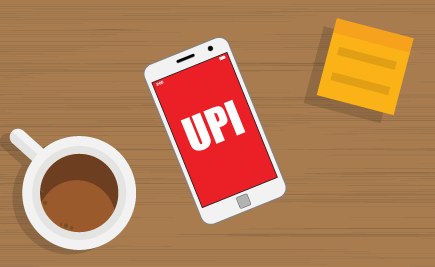
The cash crunch following demonetisation has seen multiple mobile payment options emerge and evolve to keep pace with the current transaction needs. While payments through Debit and Credit Cards and net banking have been around for years now, the Unified Payment Interface and e-wallets have caught on in a big way.
E-wallets have had a head-start, having been around for a few years, whereas the UPI was launched only in 2016. In this sense, UPI is still young and has ground to cover in terms of gaining the same popularity as e-wallets which have become irreplaceable in the post-demonetisation era.
E-wallets are also popular due to increased publicity, discounts, and cashback on purchases. But the UPI, though young, has the potential to go where e-wallets can’t. And this is why the launch of the BHIM app – a platform that allows both UPI as well as USSD-based payments – is great news for the Indian consumer.
Let’s take a look at the aspects that make UPI a smarter choice when compared to other mobile payment options.
Easy Set-up
Setting up a UPI account and transacting through it is as simple as that of an e-wallet. All you need to do is download your bank’s netbanking app or third-party UPI app and log into it using your netbanking credentials to start operating. Following this, you need to create a virtual payment address – the one-point address for sending and receiving money. For sending funds to another bank account, you just need to key in the virtual payment address of the payee. It doesn’t need details such as the payee’s bank account number, IFSC code, or branch details. And the money is instantly credited to the payee’s bank account.
Additional Reading: UPI a step towards banking revolution
Not An Intermediary
First of all, the UPI, unlike e-wallets, is not an intermediary between bank accounts. It is a technology that can be implemented by end users to carry out banking transactions such as fund transfers and payments directly between bank accounts. An e-wallet needs to be loaded with money for use, and the maximum that can be loaded currently is Rs. 20,000 before KYC and Rs. 1,00,000 after KYC. The UPI, on the other hand, allows you to transact directly from the bank account instantly and free of cost. Each transaction can go up to Rs. 1,00,000. This gives the UPI a big leverage over e-wallets in terms of sheer transacting capacity.
Interoperability
Mobile wallets in India are semi-closed, allowing you to transfer funds only to payees or merchants using the same mobile wallet. For example, if you use a mobile wallet, you can transfer only to another user of the same type of wallet and not any other wallet. There is a lack of interoperability. On the UPI, this is not a problem. You can use an ICICI-based UPI account to transfer money to an HDFC-based UPI account. Keep in mind that it is possible to transfer money from your wallet to your bank account. It might cost you more than a bank-to-bank transfer.
Additional Reading: 10 Tips To Use Your Mobile Wallets Right
No Charges
Banks may or may not apply nominal charges for UPI transfers. As per the RBI’s instructions, charges applied by banks need to be lower than or at par with their NEFT charges. However, some banks are currently offering UPI transactions at no cost.When it comes to e-wallets, there are caps on how much you can transfer from your wallet to your linked bank account. For example, one e-wallet has set a limit of Rs. 5,000 per transfer and a total of Rs. 20,000 in a month. As discussed in the point above, such transfers may carry charges. The UPI poses no such difficulty since the money is already sitting in a bank account.
Security Risks
Another aspect to consider is cyber security. Since a UPI account is directly linked to a banking account, you need to key in your net-banking credentials to carry out any transaction through it. You are also asked for confirmation of transaction details before processing the final transaction. E-wallets, on the other hand, have a default setting of keeping you logged in unless you manually log out after every transaction. So, if your phone gets stolen or lands in the wrong hands in an unlocked condition, your money in the e-wallet is at risk. For accessing a UPI account, the user has to key in the account holder’s username and password. Although most e-wallets comply with the RBI’s regulation on conducting a two-factor authentication for each transaction, some e-wallets don’t, and are thus lacking when it comes to necessary security features.
Additional Reading: E-wallets – Finding The Loopholes
There’s only one drawback on UPI-based apps: they aren’t yet offering cashback and discounts that many e-wallets currently offer. However, on all other parameters, the UPI edges out e-wallets. Dozens of leading banks have now launched their UPI-enabled apps. Their efforts have been further strengthened by the launch of the government-backed BHIM app, thus giving a massive push to the government’s vision of creating a ‘less-cash’ society. We can expect more innovations to happen in the UPI space, allowing it to become a more accessible and marketable platform.
Bonus Video: A.P. Hota (NPCI MD & CEO) talks about UPI implementation
